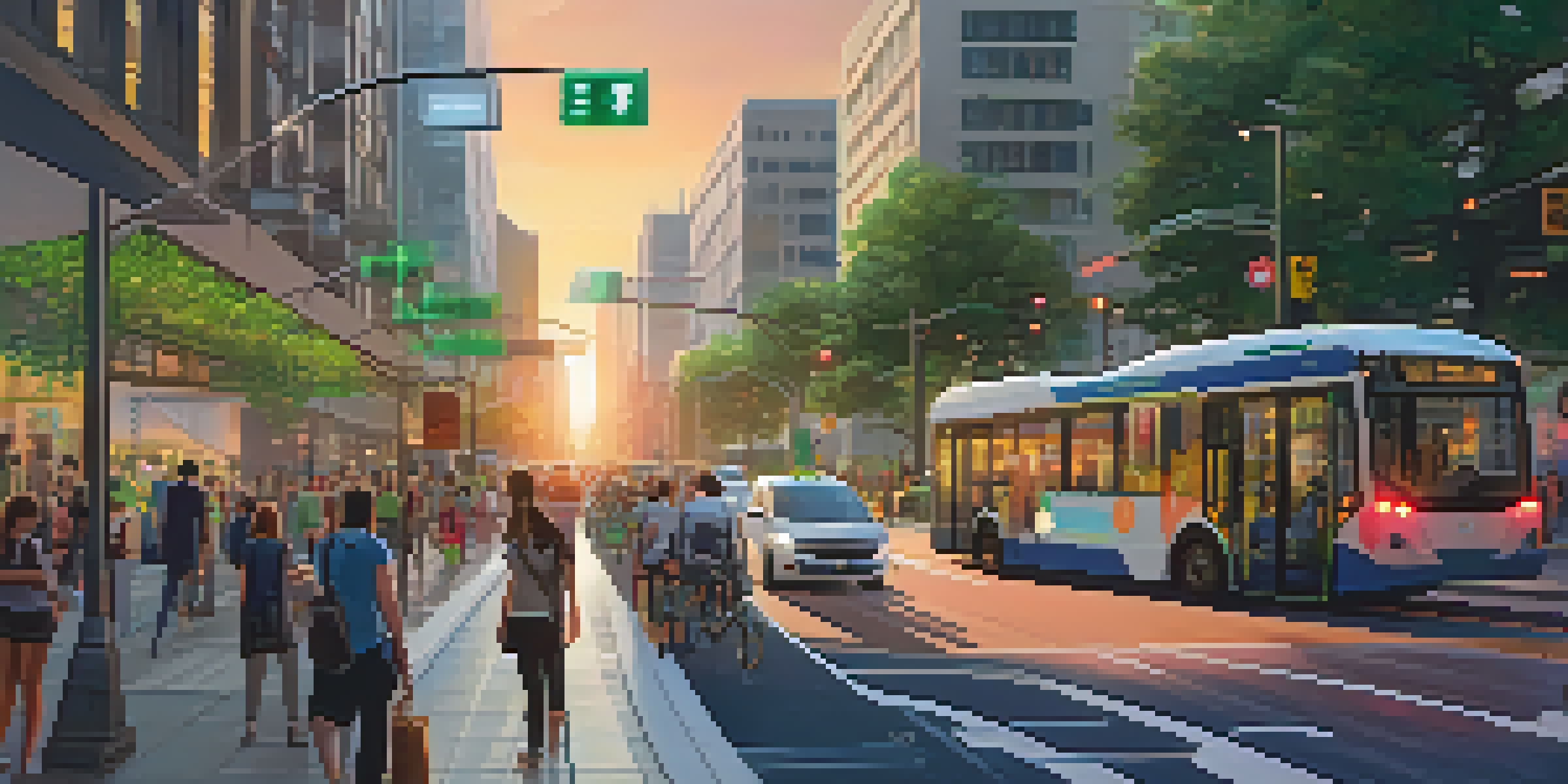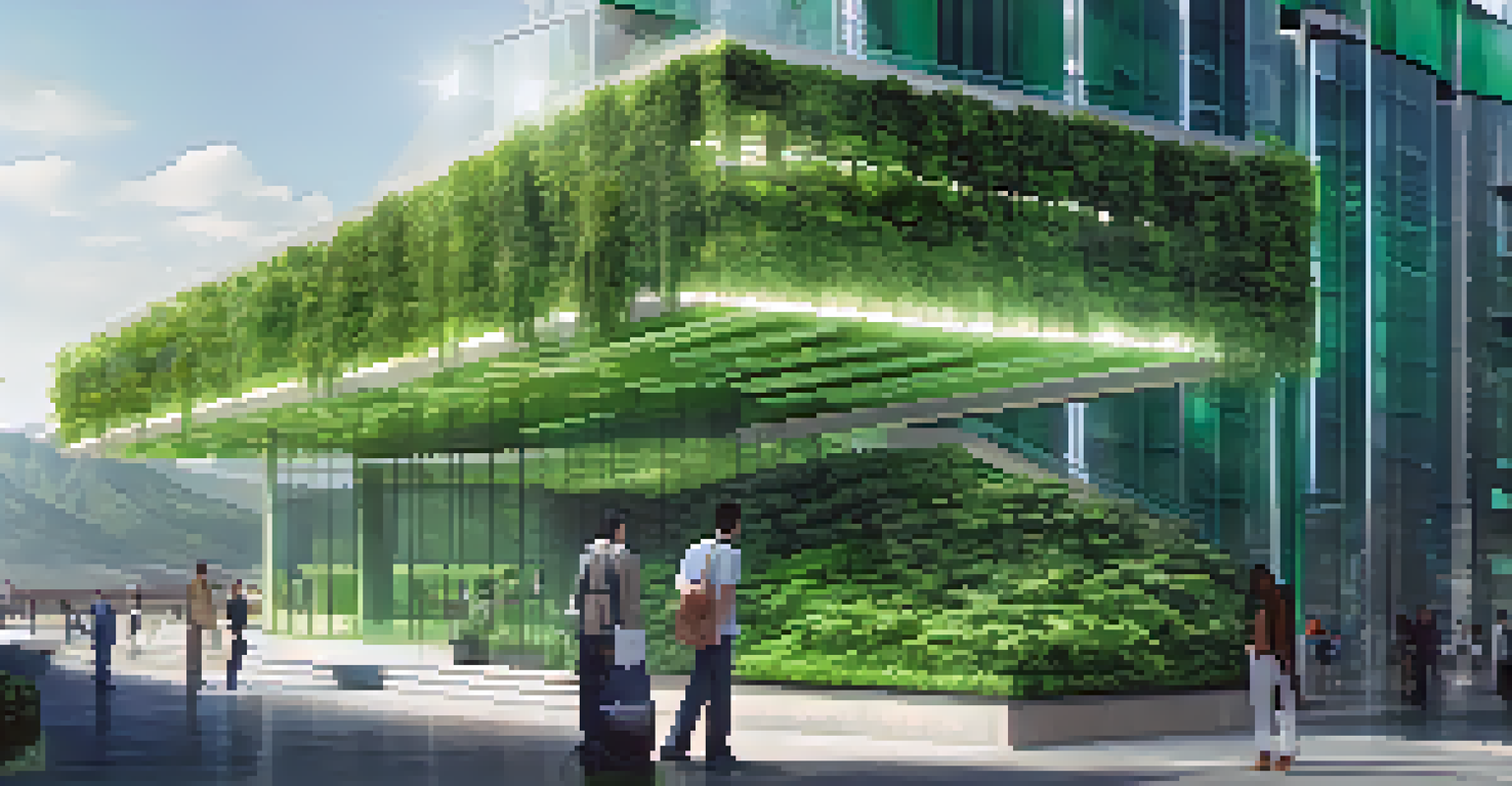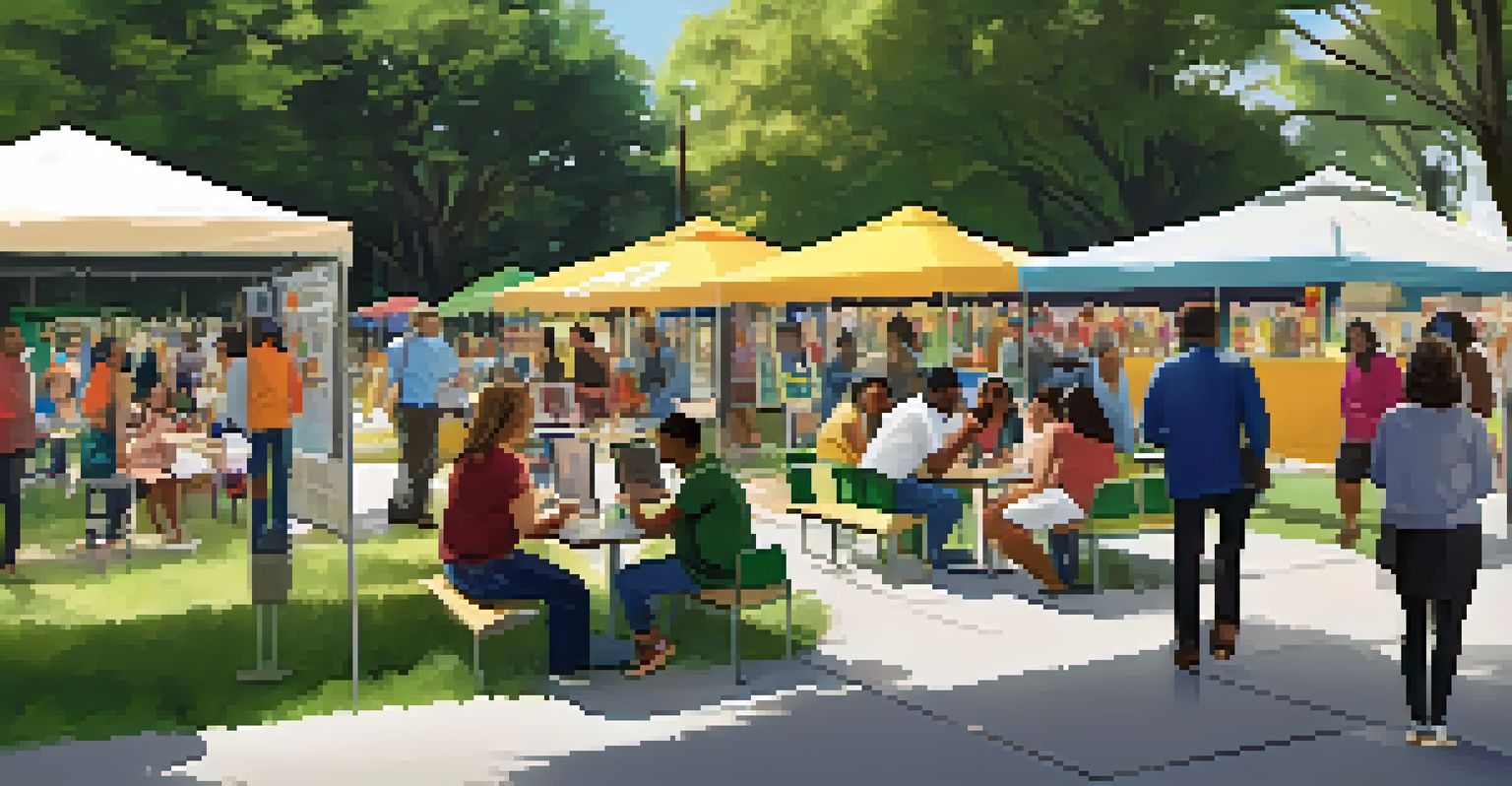Smart City Trends: What to Expect in Urban Development

The Rise of IoT in Urban Spaces
The Internet of Things (IoT) is transforming our urban landscapes, connecting everything from traffic lights to waste management. Imagine streets where your smart devices communicate to optimize traffic flow, reducing congestion and emissions. This interconnectedness allows cities to operate more efficiently, providing residents with a smoother and safer experience.
The real power of the Internet of Things lies in the ability to connect people, processes, and things to create an environment that is smarter and more efficient.
Cities are using IoT to gather real-time data, which helps in making informed decisions. For example, smart sensors can monitor air quality and adjust public transport routes accordingly. As a result, cities can tackle pollution and enhance the quality of life for their inhabitants.
Moreover, the integration of IoT also paves the way for innovative public services. With smart technology, emergency services can respond faster, and city maintenance can be proactive rather than reactive, leading to a more responsive urban environment.
Sustainable Urban Mobility Solutions
Sustainability is at the forefront of urban development, especially concerning transportation. Cities are increasingly adopting electric and shared mobility options to reduce their carbon footprint. Picture a city where electric buses and car-sharing services are the norm, providing affordable and eco-friendly transport.

Moreover, the development of dedicated bike lanes and pedestrian-friendly spaces encourages healthier lifestyles. These solutions not only reduce traffic congestion but also promote community interaction and well-being. Cities are rethinking their transportation frameworks to prioritize people over vehicles.
IoT Enhances Urban Efficiency
The integration of IoT technology allows cities to optimize traffic, improve public services, and enhance residents' quality of life.
As these sustainable options become more prevalent, we can expect to see a shift in how urban residents commute. It’s not just about getting from point A to point B anymore; it’s about doing so in a way that respects the planet and enhances the urban experience.
Smart Infrastructure: Building Tomorrow's Cities
Smart infrastructure is revolutionizing how we design and build urban spaces. With advanced materials and construction techniques, cities can create structures that are not only resilient but also energy-efficient. Imagine buildings that generate their own energy and adapt to environmental conditions.
Sustainability is no longer about doing less harm. It’s about doing more good.
This trend goes beyond just energy efficiency; it also includes the use of technology to monitor the health of infrastructure. Sensors embedded in roads and bridges can provide real-time data about their condition, allowing for timely maintenance. This proactive approach can save cities significant amounts of money and ensure public safety.
As more cities adopt smart infrastructure, we can expect a transformation in urban aesthetics as well. Innovative designs that integrate nature and technology will create more visually appealing and functional spaces for everyone.
Data-Driven Decision Making in Urban Planning
Data is the new currency in urban planning, driving decisions that shape our cities. With the ability to analyze vast amounts of data, city planners can understand trends and needs more effectively. Imagine using data to predict population growth and adjust housing developments accordingly.
This data-driven approach also extends to public services, where analytics can optimize resource allocation. For instance, understanding peak usage times for public transportation can lead to improved scheduling and service frequency, directly benefiting commuters.
Sustainable Transport Solutions
Cities are adopting electric and shared mobility options to reduce carbon footprints while promoting healthier and more community-focused urban environments.
Furthermore, involving citizens in the data collection process creates a more engaged community. Technologies like mobile apps allow residents to share their experiences and needs, ensuring that urban development aligns with the actual demands of the population.
Enhanced Public Safety through Smart Technologies
Public safety is paramount in smart city development, and technology plays a crucial role here. Surveillance systems equipped with AI can help monitor public spaces, identifying potential threats and alerting authorities in real time. This leads to a safer environment for everyone.
Additionally, smart lighting systems can adjust based on activity levels in an area, enhancing safety during nighttime. Imagine walking through a well-lit park that brightens as you approach, making you feel secure and welcome.
Moreover, emergency response systems are becoming more efficient thanks to technology. Smart city initiatives can streamline communication during crises, ensuring that help arrives quickly and effectively when needed.
Community Engagement and Inclusivity in Urban Development
A key aspect of smart city initiatives is fostering community engagement and inclusivity. Cities are leveraging technology to ensure that all residents have a voice in the urban development process. Imagine platforms where citizens can share ideas and feedback on new projects, making them feel involved.
This participatory approach not only empowers residents but also leads to better outcomes. When community members contribute their insights, planners can create spaces that truly reflect the needs and desires of the population. It’s about building a city for everyone, not just a select few.
AI Drives Urban Innovation
Artificial Intelligence is revolutionizing urban planning and service delivery, enabling cities to respond proactively to challenges like traffic and pollution.
Furthermore, technology can help bridge gaps for marginalized groups, ensuring they have access to essential services and information. By prioritizing inclusivity, smart city initiatives can create diverse, vibrant communities that thrive.
The Role of Artificial Intelligence in Urban Innovation
Artificial Intelligence (AI) is becoming a cornerstone of urban innovation, streamlining processes and enhancing service delivery. From traffic management systems that predict congestion to AI-powered analytics tools for city planning, the possibilities are vast. Imagine a city where AI helps optimize everything from public transportation to waste disposal.
Moreover, AI can assist in environmental monitoring, analyzing data to provide insights on pollution levels and climate change impacts. This intelligence allows cities to respond proactively, implementing measures to protect our planet and improve residents' health.

As AI continues to evolve, its integration into urban development will only deepen. The future holds exciting prospects for cities that embrace this technology, potentially leading to smarter, more adaptive urban environments.